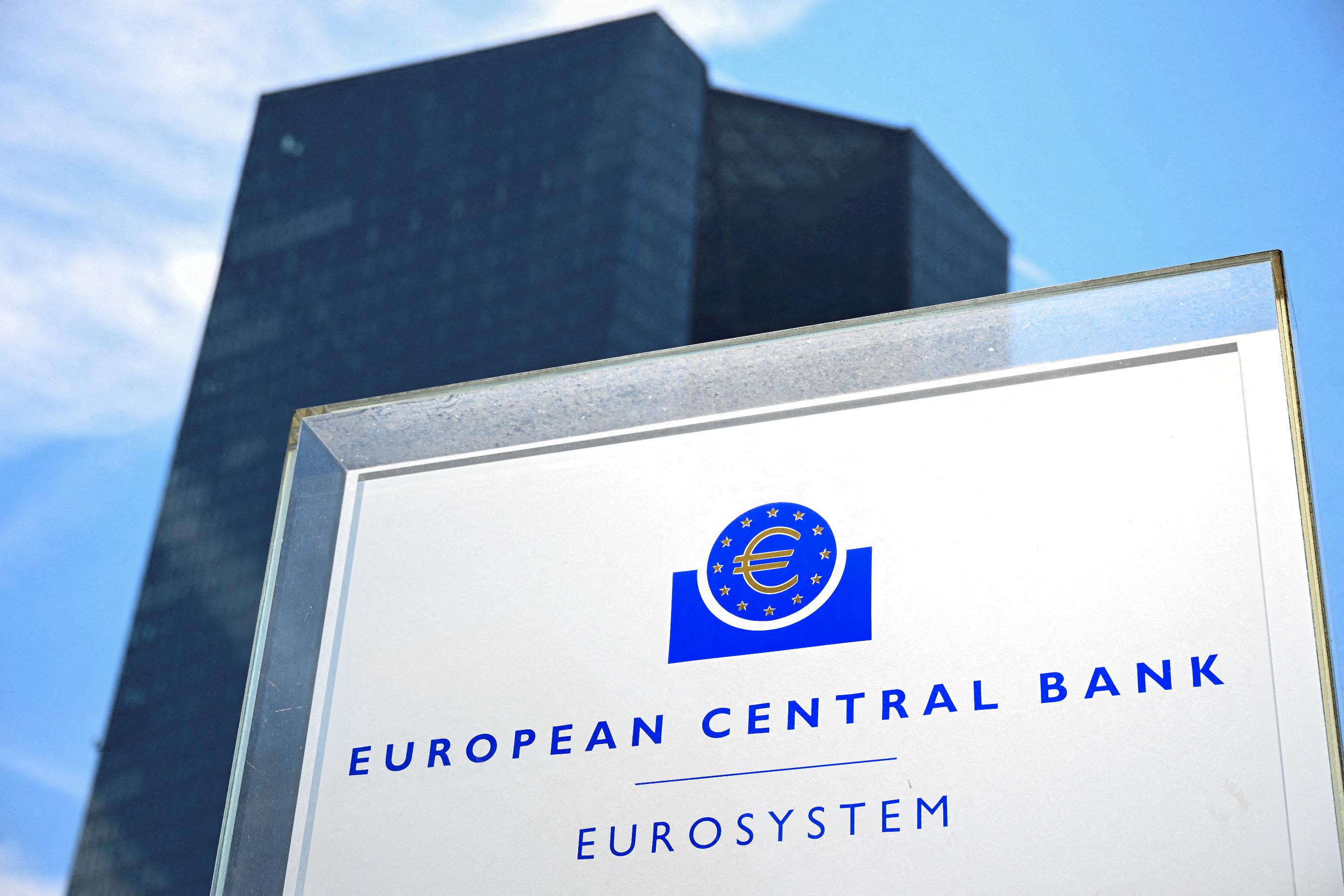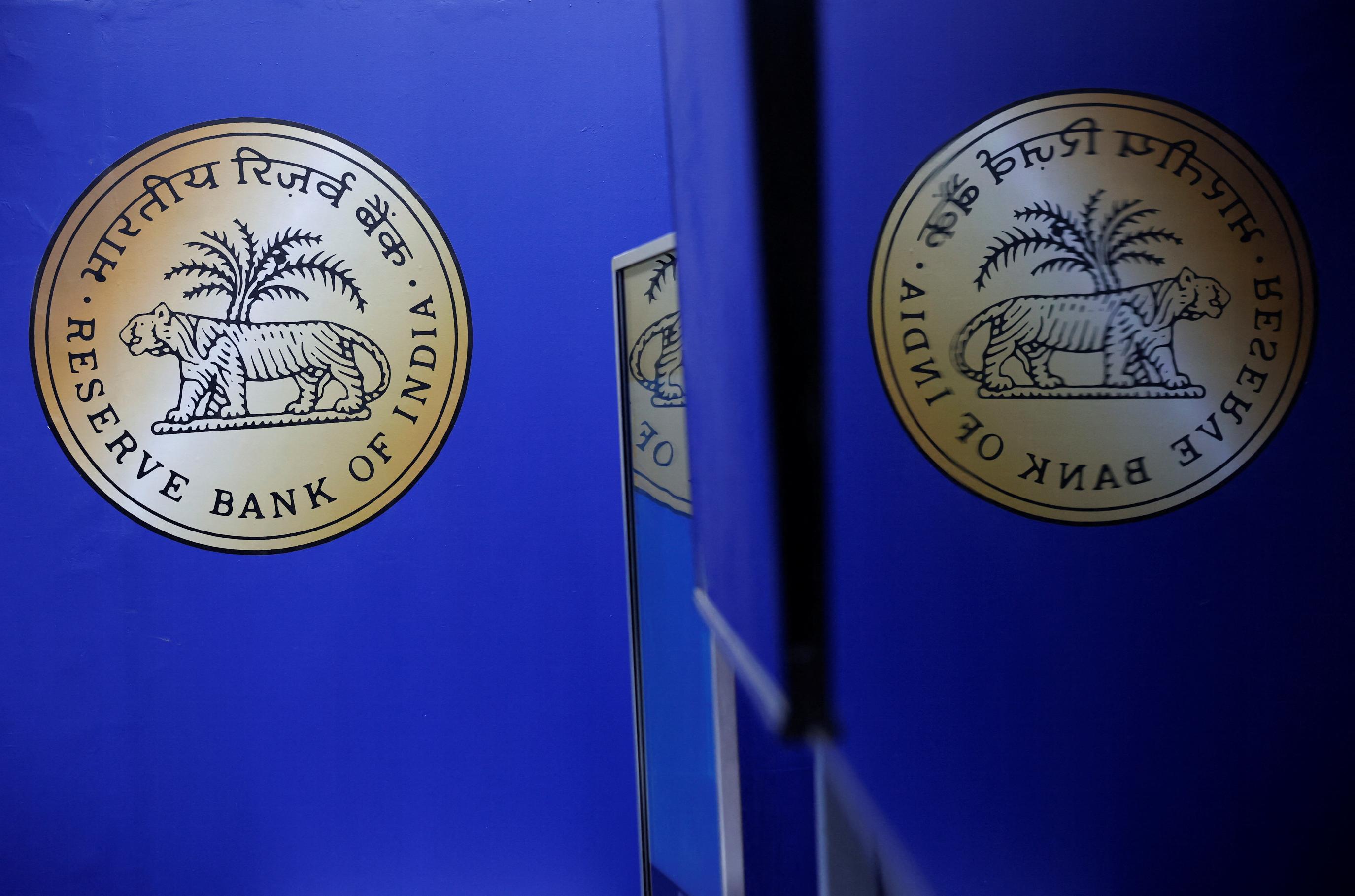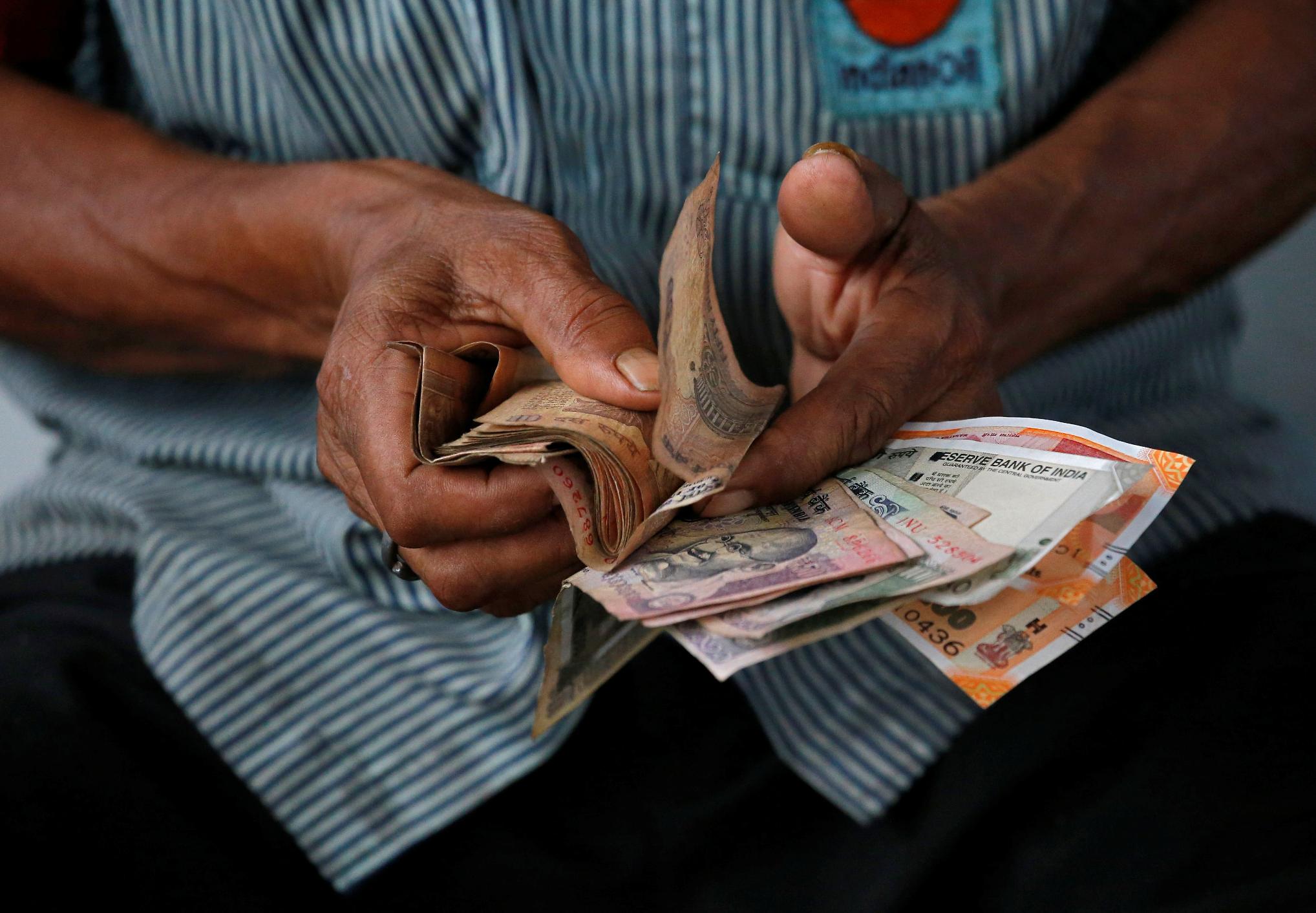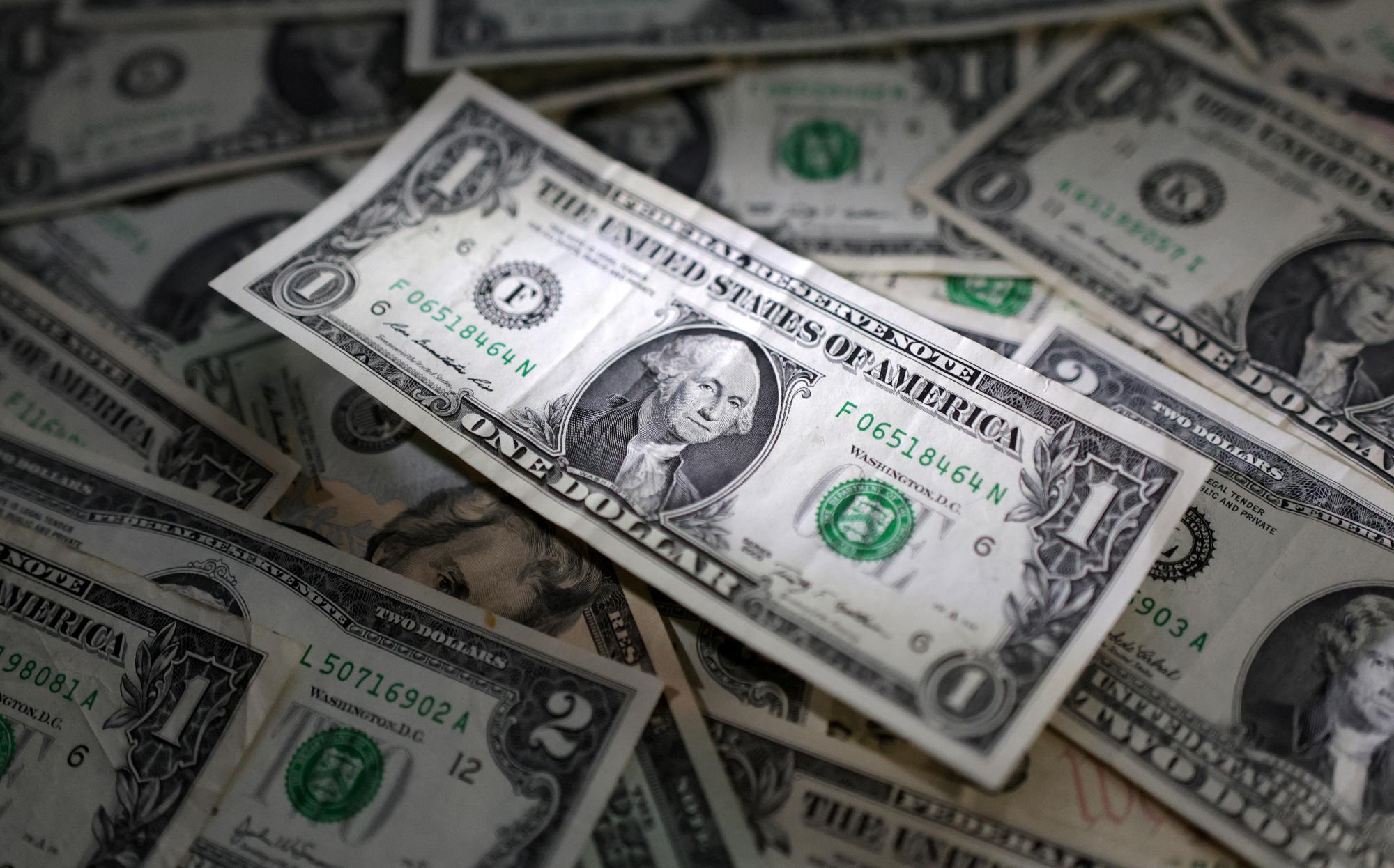
2024-09-12 04:40
A look at the day ahead in European and global markets from Stella Qiu Asian stock markets were broadly higher as investors regained some of their love for tech stocks, and Nvidia in particular, while looking ahead to a near-certain rate cut by the ECB and possible hints on what more is to come. All of which helped to offset a damper on the markets from the rapidly diminishing chances for an outsized half-point rate cut by the Fed next week. The much anticipated U.S. inflation report overnight showed that the core CPI rose 0.28% in August, slightly above a forecast rise of 0.2%, and that was enough for skittish markets to finally decide that the Fed will settle for a 25 bps rate cut on Wednesday. That drove short-term yields higher and gave the dollar a much-needed boost against the yen , which pulled back from its 2024 high of 140.71 per dollar. The weaker yen sent the Nikkei almost 3% higher, overshadowing hawkish comments by a senior Bank of Japan official that rates need to reach 1% over time. Europe is set for solid gains heading into its big risk event of the day: the European Central Bank policy decision. EUROSTOXX 50 futures jumped 1.2% and FTSE futures gained 1%. A quarter-point cut is fully baked in but the question remains whether the central bank will cut again in October and December. Inflation-wary hawks are still in the majority, with markets only pricing a move next month at about 40%. The most-likely scenario is that ECB President Christine Lagarde in her post-meeting briefing will stick to the recent narrative that decisions are taken meeting by meeting, based on incoming data. Next up, attention will shift back to the U.S. where weekly jobless claims and producer price data are due. Jobless claims have gained extra prominence given the Fed's laser focus on the health of the labour market. A bad number - higher than the forecast 230,000 - could revive the prospects for a 50 bps cut. Economists expect the PPI rose 0.1% last month. Some elements of the data will help analysts to refine forecasts for the Personal Consumption Expenditures Price Index, the Fed's preferred gauge of inflation, which is due on Sept. 27. Key developments that could influence markets on Thursday: -- ECB policy meeting, followed by briefing from President Christine Lagarde -- U.S. weekly jobless claims -- U.S. PPI Sign up here. https://www.reuters.com/markets/europe/global-markets-view-europe-2024-09-12/

2024-09-12 04:06
MUMBAI, Sept 12 (Reuters) - The Indian central bank was likely selling U.S. dollars on Thursday to help the rupee hold above the key support level of 84, five traders told Reuters. The rupee was quoting at 83.97 per U.S. dollar compared to its close at 83.9775 in the previous session. The local currency had dipped to its all-time low of 83.9850 last week. State-run banks were spotted offering dollars, most likely on behalf of the Reserve Bank of India, in "small lots" near 83.97-83.98 levels, a trader at a foreign bank said. The RBI has routinely intervened to help the rupee near these levels over the past month, traders said. Asian currencies were mostly lower on Thursday after resilient U.S. inflation data dashed hopes of a 50-basis-point rate cut by the Federal Reserve next week. Sign up here. https://www.reuters.com/markets/currencies/indian-central-bank-likely-selling-dollars-support-rupee-traders-say-2024-09-12/

2024-09-12 03:13
MUMBAI, Sept 12 (Reuters) - The Indian rupee is likely to be under slight pressure at the open on Thursday after resilient U.S. inflation dented hopes of the Federal Reserve opting for a large rate cut next week. The one-month non-deliverable forward indicated that the rupee will open at 83.98-83.99 to the U.S. dollar, compared with 83.9775 in the previous session. The currency risks dipping past its lifetime low of 83.9850 hit last week. "With U.S. inflation out of the way, the base case now is for a 25-basis-point (bps) Fed cut next week," Srinivas Puni, managing director at FX advisory firm QuantArt Market Solutions, said. "Still, 100 bps of cuts in total are expected in 2024, implying a 50 bp cut during November/December period. Dollar prognosis now hinges on whether the Fed will toe the market line and indeed go for four cuts." The dollar currently "is in balance" and the rupee will remain in a range for longer at least until the Fed's Sept. 17-18 meeting. U.S. Treasury yields rose after a measure of U.S. inflation increased more than expected, prompting investors to dial back bets of the Fed delivering aggressive rate cuts. U.S. core inflation rose 0.3% month-on-month compared to the 0.2% pace expected by economists polled by Reuters. The slightly hotter-than-expected monthly reading on U.S. core inflation has seen traders converge on a 25 bps rate cut for the Fed’s September meeting, Westpac bank said in a note. Futures are now pricing a 85% probability of 25 bps rate cut at next week's meeting. The odds of a 50 bps rate cut have dropped to 15%, nearly half of what they were prior to the inflation data. The dollar index inched up in Asia trade, taking support from the higher U.S. yields. Most Asian currencies declined. KEY INDICATORS: ** One-month non-deliverable rupee forward at 84.07; onshore one-month forward premium at 9 paise ** Dollar index down at 101.76 ** Brent crude futures up 0.2% at $70.8 per barrel ** Ten-year U.S. note yield at 3.67% ** As per NSDL data, foreign investors bought a net $352.8mln worth of Indian shares on Sep. 10 ** NSDL data shows foreign investors sold a net $96.6mln worth of Indian bonds on Sep. 10 Sign up here. https://www.reuters.com/markets/currencies/dwindling-hopes-50-bps-fed-rate-cut-may-push-rupee-all-time-low-2024-09-12/

2024-09-12 00:43
ECB cuts rates by 25 bps ECB's Lagarde does not commit to October rate move U.S. data douses hopes for big Fed cut NEW YORK, Sept 12 (Reuters) - The euro rose against the dollar on Thursday after the European Central Bank lowered interest rates and ECB president Christine Lagarde dampened expectations for another cut next month, saying the bank will let economic data dictate the next policy move. "We are going to decide meeting by meeting," Lagarde said in a briefing after the ECB eased again on Thursday by 25 basis points (bps) amid slowing inflation and economic growth. "I'm not giving you any commitment of any kind as far as that particular date is concerned and our path is not predetermined at all." The ECB lowered its deposit rate to 3.5%, as widely expected. The refinancing rate, however, was cut by a much bigger 60 bps to 3.65% in a long-flagged technical adjustment. Rate futures have pared back bets of an October rate cut to just more than seven bps from 10 bps just before Lagarde spoke, according to LSEG calculations. "Looking ahead, the path for interest rates remains uncertain," said Yael Selfin, chief economist at KPMG in the UK. "While there is widespread consensus on the Governing Council that policy restrictiveness should be eased, divergent views remain around the pace of cuts." She expects further easing in December that would take the deposit rate down to 3.25%. If the euro zone outlook weakens further, Selfin sees ECB policymakers increasing the pace of cuts next year towards a terminal rate of around 2.25%. The euro was last up 0.37% at $1.105 , but down 0.5% so far this week. Against the yen, the euro rose about 0.2% to 157.145 yen . The U.S. dollar index fell 0.41% to 101.36 , driven partly by gains in the euro, the largest component of the index. Against the yen, the dollar eased 0.2% on the day to 142.07 , after gaining 0.2% so far this week. "Lagarde kind of delivered what was expected at the ECB," said Steve Englander, head of Global G10 FX Research at Standard Chartered in New York. "Overall, the market has a bit of risk appetite and they're buying currencies that they sold before - which often is an indication that risk appetite is restored." Mixed U.S. economic data released on Thursday cemented expectations of a 25-bps cut next week by the Federal Reserve. U.S. initial jobless claims rose 2,000 to a seasonally adjusted 230,000 for the week ended Sept. 7, in line with expectations. U.S. August producer prices increased a slightly-more-than-expected 0.2% as services costs rose, but the trend remained consistent with ebbing inflation. Data for July was revised lower to show the producer price index unchanged instead of edging up 0.1% as previously reported. Economists polled by Reuters had forecast the PPI gaining 0.1%. "Stable producer prices should drive investment and that will drive the economy," wrote Scott Helfstein, head of investment strategy at Global X in emailed comments. "It is time for the Fed to cut, but they may well take it slow and steady. That seems to be their operating model." The U.S. rate futures market has priced just a 27% chance of a 50-bp cut this month, down from as high as 50% on Friday following a mixed U.S. nonfarm payrolls report. For 2024, rate futures expect 108 bps cuts, down from about 113 bps earlier this week. Bank of Japan board member Naoki Tamura, known as a policy hawk, said on Thursday the BOJ must raise rates to at least 1% as soon as the second half of the next fiscal year but added that it would likely raise rates slowly and in several stages. On Wednesday, fellow BOJ board member Junko Nakagawa reinforced the central bank's tightening bias by saying low real rates leave room for further rate hikes. Those comments have helped the yen, which has gained 2.6% so far this year versus the dollar . In other currencies, sterling rose 0.48% versus the greenback to $1.3106 after dipping to $1.30025 in the previous session, its lowest since Aug. 20. In cryptocurrencies, bitcoin gained 1.59% at $58,398.00. Ethereum rose 0.29% at $2,354.60. Sign up here. https://www.reuters.com/markets/currencies/dollar-firm-inflation-data-douse-bets-big-fed-rate-cut-2024-09-12/

2024-09-12 00:25
SYDNEY, Sept 12 (Reuters) - China's crude oil imports staged a rebound in August, rising to the highest in a year, but the increase is largely due to earlier lower prices rather than any recovery in consumption. The world's biggest crude importer saw arrivals of 49.1 million metric tons in August, equivalent to 11.56 million barrels per day (bpd), according to customs data released on Sept. 10. This was the highest monthly total since August last year, and also a strong gain on the 9.97 million bpd seen in July, which was the weakest monthly total for almost two years. While the August imports look strong, it's worth noting that they are still down 7% from the same month in 2023, and imports for the first eight months of this year are 3.1% below those for the same period last year. The question for the market is whether August's rebound in imports is the start of a recovery in China's crude demand, or is it more likely a reflection of the lower oil prices that prevailed when August-arriving cargoes would have been arranged. The buying pattern of China's refiners is that they tend to increase imports when they deem prices to be at a competitive level, and conversely they pull back when they believe prices have risen too high, or too quickly. Cargoes that arrived in August were most likely arranged in May and June, a time when global crude prices were trending lower. Global benchmark Brent futures reached their highest level so far this year of $92.18 a barrel on April 12, before starting a downtrend to a low of $75.05 on Aug. 5. This means that China's refiners would likely have been encouraged to buy more crude during this window, meaning August and September imports may be fairly strong relatively to the earlier months this year. However, Brent crude staged a small rally after the Aug. 5 low, reaching a high of $82.40 a barrel on Aug. 12, and then staying in a fairly narrow range either side of $80 until the end of the month. Since then, global demand concerns, especially in China, have seen Brent fall sharply to $68.68 a barrel during trade on Sept. 10, the lowest level since Dec. 21. IMPORT BOOST COMING? The current weakness in global crude prices suggest that China's refiners may boost imports, and if they are buying cargoes now, this increase will show up in arrivals in November, December and even into January. It's also the case that China's refiners are happy to build inventories when prices are low, and even dip into these stockpiles when prices rise. China doesn't disclose the volumes of crude flowing into or out of strategic and commercial stockpiles, but an estimate can be made by deducting the amount of crude processed from the total of crude available from imports and domestic output. Using this methodology, China added about 800,000 bpd to inventories in the first seven months of the year, and it won't be a surprise if this pace accelerated in August, given the strong imports and the likely ongoing softness in refinery processing rates. There is perhaps a slight irony in the possibility that China buys more oil because the price has dropped, just as the Organization of the Petroleum Exporting Countries (OPEC) trims its demand forecast for the world's second-biggest economy. OPEC's latest report, released on Sept. 10, cut its forecast for China's demand growth for a second straight month, to 650,000 bpd for 2024 from 700,000 bpd the previous month, and 760,000 bpd the month before that. Even the revised forecast is likely still too optimistic, given China's crude oil imports for the first eight months of 2024 are 10.98 million bpd, some 390,000 bpd below the 11.37 million bpd from the same period in 2023. For OPEC's forecast to be realised China's crude imports would have to surge in the fourth quarter, and while the current weak prices may well see them increase, it would be a major surprise if they surged by the volumes needed to meet the OPEC estimate. The opinions expressed here are those of the author, a columnist for Reuters. Sign up here. https://www.reuters.com/markets/commodities/chinas-crude-oil-imports-rebound-its-prices-not-consumption-russell-2024-09-12/

2024-09-11 23:46
Hurricane briefly upgraded to Category 2 before coming ashore Nearly 39% of oil and half of natural gas production in Gulf of Mexico offline Louisiana parishes issue evacuation orders, curfews set U.S. government and Louisiana both declare state of emergency NEW ORLEANS, Sept 11 (Reuters) - Hurricane Francine came ashore in southern Louisiana on Wednesday, threatening New Orleans and the wider Gulf Coast with powerful winds, rain and a storm surge that led to evacuation orders for thousands of people. Francine packed maximum sustained winds of 90 miles per hour (150 kph) after the eye of the storm traveled inland over southern Louisiana about 65 miles (105 km) west-southwest of New Orleans, the U.S. National Hurricane Center said. The hurricane center briefly upgraded the storm from Category 1 to Category 2 on the five-step Saffir-Simpson scale just before it made landfall. Even as a Category 1 storm, its very dangerous winds are capable of producing damage, and the whole of the Gulf Coast in Louisiana and Mississippi was under a warning for storm surge that the hurricane center called life-threatening. The New Orleans metropolitan area was under a hurricane watch, meaning hurricane conditions were possible. The iconic French Quarter neighborhood known for its tourist bars and restaurants was locked down with a noticeable police presence and very few pedestrians. On Bourbon Street, Gina Kralek said she was working at the Clover Grill covering for a pair of co-workers who had evacuated before the storm. "Normally I evacuate but I've got my three dogs," Kralek said. "Not everyone wants to take me with the dogs." Louisiana Governor Jeff Landry and U.S. President Joe Biden each declared a state of emergency in anticipation of the storm, freeing up emergency management resources and potential financial aid in the event of serious damage. Several parishes, or counties, on or near the Louisiana Gulf Coast earlier issued mandatory evacuation orders, and the state transportation department issued evacuation maps. The city of New Orleans distributed sandbags at five sites. Any major storm near Louisiana evokes memories of Hurricane Katrina, the 2005 storm that devastated New Orleans and surrounding areas, killing nearly 1,400 people and causing $125 billion in damage, according to a 2023 hurricane center report , opens new tab. Water from Lake Pontchartrain, which borders the city to the north, was starting to churn over its seawall. However since Katrina, the federal government built a $14.5 billion levee protection system, which includes storm water gates that can prevent storm surge into the city's interior drainage canals, which experienced catastrophic failure during Hurricane Katrina. Grocery stores were boarded up by late afternoon but not before veterans of previous storms loaded up on provisions. "We're all set. We have our canned goods. Have our supplies," said Steve Rodriguez, who has lived in New Orleans since 1983 and was attempting some additional last-minute shopping. "I was hoping to get some sausage. I've got meat in the freezer but it would be easier to cook up some beans or something." The storm already had the effect of disrupting energy production and agricultural exports out of the U.S. Gulf of Mexico. Nearly 39% of oil and almost half of natural gas production in the U.S. Gulf of Mexico was offline on Wednesday, according to the offshore regulator. A total of 171 production platforms and three rigs had been evacuated. The hurricane center reported a peak gust of 97 mph (156 kph) in Dulac, a coastal fishing community 70 miles southwest of New Orleans. That's where fisherman Barry Rogers said he planned to ride out the storm on his 80-foot (24-meter) shrimp boat rather than his home. "The house is not going nowhere. If it does, there's nothing you can do about it," he said. "If a rope breaks on the boat, I'd rather be there to tie up another one." Sign up here. https://www.reuters.com/world/us/hurricane-francine-makes-landfall-southern-louisiana-us-nhc-says-2024-09-11/
